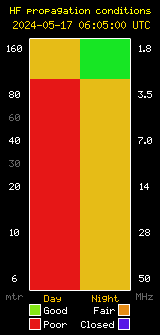Play Like the Big Guns – With Little Money
Hello All, I decided to share the details of my HF station here on the SBARC website for a couple of reasons. The primary reason is that maybe someone out there would find my setup useful in building their own station. I am very limited by budget and space so I have to figure out ways of making the most of a little bit of everything. For you HAMS that have $10,000 or more invested in your station, my little station will not compare to your capabilities. Of primary interest in this article is my all-mode HF radio and the Pan-adapter setup. The first piece of the puzzle came into place about 2 years ago when I purchased the SDRPlay SDR (Software Defined Radio). I got this before I even got my first ham license. The radio itself is a marvelous piece of engineering. It is a receiver that covers the range 100 KHz to 2 GHz continuously. It has a great front end filter bank for anti aliasing. It samples at rates between 2.0 and 10.66 MSPS. It has a 12 bit native ADC with a 60 dB SNR. Impressive specs for $150. I originally was using this radio as a super scanner. Its great for being able to browse around and see an 8 MHz band at a time. It works well with all the popular SDR software packages out there, but it is married well with HDSDR. The free HDSDR software can control the radio and performs all the demodulation you can imagine. It handles AM, FM, SSB and Digital modes all in software. It provides some impressive filtering capabilities including point and click notch filters. You can read more about both by clicking on the following links; http://www.sdrplay.com/ and http://www.hdsdr.de/ After being a ham for about a year, I decided I wanted to play with HF. Needing to stay small, in money and footprint, and after some missteps, I finally ended up with a neat little radio in the form of a Yaesu FT-857D. This little radio does it all. It is an all mode ham band 160 meter to 6 meter transceiver with 2 meter and 70 cm thrown in for good measure. It puts out 100 watts on 160 to 6 meters and 50 watts on VHF/UHF. Its small footprint made it an ideal choice for my needs. So, having these radios meant… Continue reading









